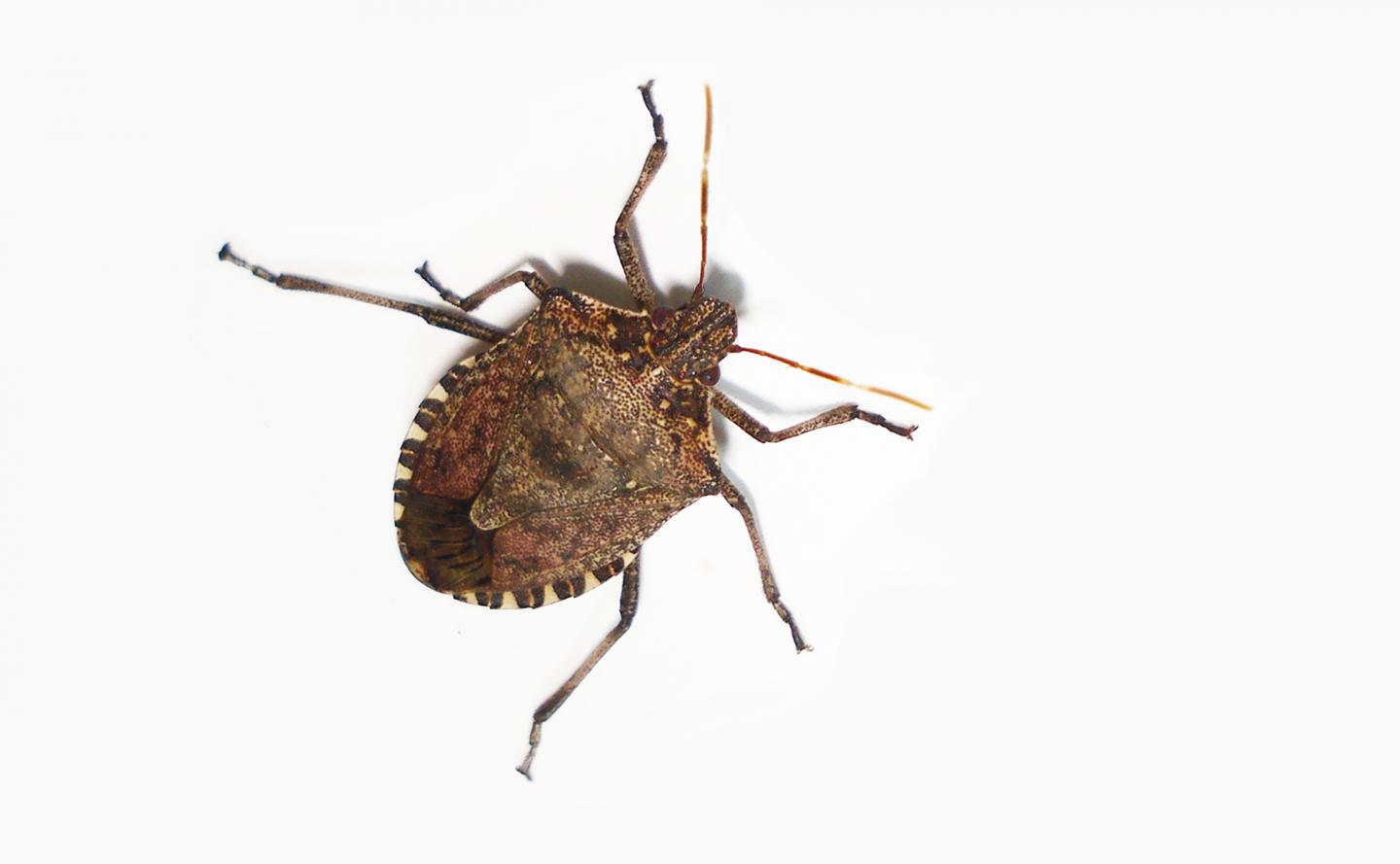Openings less than 3-by-7 millimeters prevent most brown marmorated stink bugs from entering

Credit: Mohammed El Damir, Bugwood.org, CC BY 3.0 US
Annapolis, MD; February 13, 2019–Brown marmorated stink bugs are master home invaders. Particularly in winter, when they seek shelter from the cold, if a structure has a gap or entrance large enough to fit through, they will find it.
The general advice for keeping brown marmorated stink bugs (Halyomorpha halys) out of homes and buildings is to seal such gaps or install screens or mesh across them. But no formal research has been done on exactly how small those gaps or screens must be to keep the stink bugs out–until now.
A new study by researchers at Virginia Tech and the U.S. Department of Agriculture shows that slits less than 3 millimeters wide and holes less than 7 millimeters wide should successfully exclude the vast majority of brown marmorated stink bugs. The results are published today in the Journal of Economic Entomology.
“The way people talk about H. halys, you’d think they could get into just about anything,” says Benjamin Chambers, Ph.D., a graduate of Virginia Tech’s BioBuild program who led the study. “As it turns out, the slits they can get through are pretty small, but not so small as I thought.”
To find out just how small, Chambers conducted tests in which he placed 30 brown marmorated stink bugs inside a sealed box with openings–either holes or slits–on the top and with a heat source placed below the box to stimulate their urge to exit. Different opening sizes were used across tests, and the number of stink bugs successfully exiting through the holes was observed. While 8 millimeter holes and 4 millimeter slits allowed many stink bugs to pass through, just one male adult stink bug was able to pass through a 7 millimeter hole, and none were able to pass through a 3 millimeter slit.
Chambers measured all of the stink bugs used in the tests, which showed that the holes that blocked them were, logically, just under the width and thickness of the stink bugs. For a human comparison, think of the width of your chest shoulder to shoulder and the depth of your torso front to back.
“We now know how small of an opening is not a concern for H. halys,” Chambers says. “Once you’re below a rigid 3-by-7 millimeter opening, you won’t see many getting through.”
He points out, however, that any effort to exclude insects or other pests from a home or building must be balanced with structural needs. “Opening size is also relevant in selecting screen or mesh being placed over vents. If ventilation is already near the design minimum, selecting too fine a mesh could interfere with the proper function of those vents,” he says.
Chambers also conducted a companion study, also published today in the Journal of Economic Entomology, examining how brown marmorated stink bugs respond to corpses of fellow stink bugs in their habitat. In short, Chambers found that the stink bugs had an aversion to freshly killed stink bugs, but they tended to aggregate around concentrations of dried-out, long-dead stink bugs.
This came as a surprise, Chambers says. “I expected an aversion to dead stink bugs left from previous years. I’d have thought their presence would indicate the refuge was not safe.”
There was no evidence of the stink bugs cannibalizing the corpses, so the reason for their attraction to their long-dead fellows is unclear, but the results suggest that removing dead stink bugs from a space “may eliminate a signal for H. halys to settle after entering,” Chambers writes in the study. Or, alternatively, “seeding” traps with stink bug corpses could improve trap performance, but further testing is needed.
Virginia Tech’s BioBuild program is home to doctoral researchers studying at the intersection of biological systems and human-built structures. Chambers says he has more research on brown marmorated stink bugs’ interactions with homes and buildings in the works, though he came upon the entomological element of his studies somewhat serendipitously. “I knew I wanted to study how building structures and characteristics influenced animal behavior, and vice versa,” he says. “It just so happened when I joined the program that I lived in a house full of brown marmorated stink bugs. They were an obvious choice.”
###
“Size Restrictions on the Passage of Overwintering Halyomorpha halys (Hemiptera: Pentatomidae) Through Openings,” and “Responses of Overwintering Halyomorpha halys (Hemiptera: Pentatomidae) to Dead Conspecifics” will be published online on February 13, 2019 in the Journal of Economic Entomology. Journalists may request advance copies of the articles via the contact below or download the published papers after 10 a.m., February 13, 2019, at https:/
CONTACT: Joe Rominiecki, [email protected], 301-731-4535 x3009
ABOUT: ESA is the largest organization in the world serving the professional and scientific needs of entomologists and people in related disciplines. Founded in 1889, ESA today has more than 7,000 members affiliated with educational institutions, health agencies, private industry, and government. Headquartered in Annapolis, Maryland, the Society stands ready as a non-partisan scientific and educational resource for all insect-related topics. For more information, visit http://www.
The Journal of Economic Entomology publishes research on the economic significance of insects and is the highest-cited journal in entomology. It includes sections on apiculture and social insects, insecticides, biological control, household and structural insects, crop protection, forest entomology, and more. For more information, visit https:/
Media Contact
Joe Rominiecki
[email protected]
301-731-4535 x3009
Related Journal Article
http://dx.




